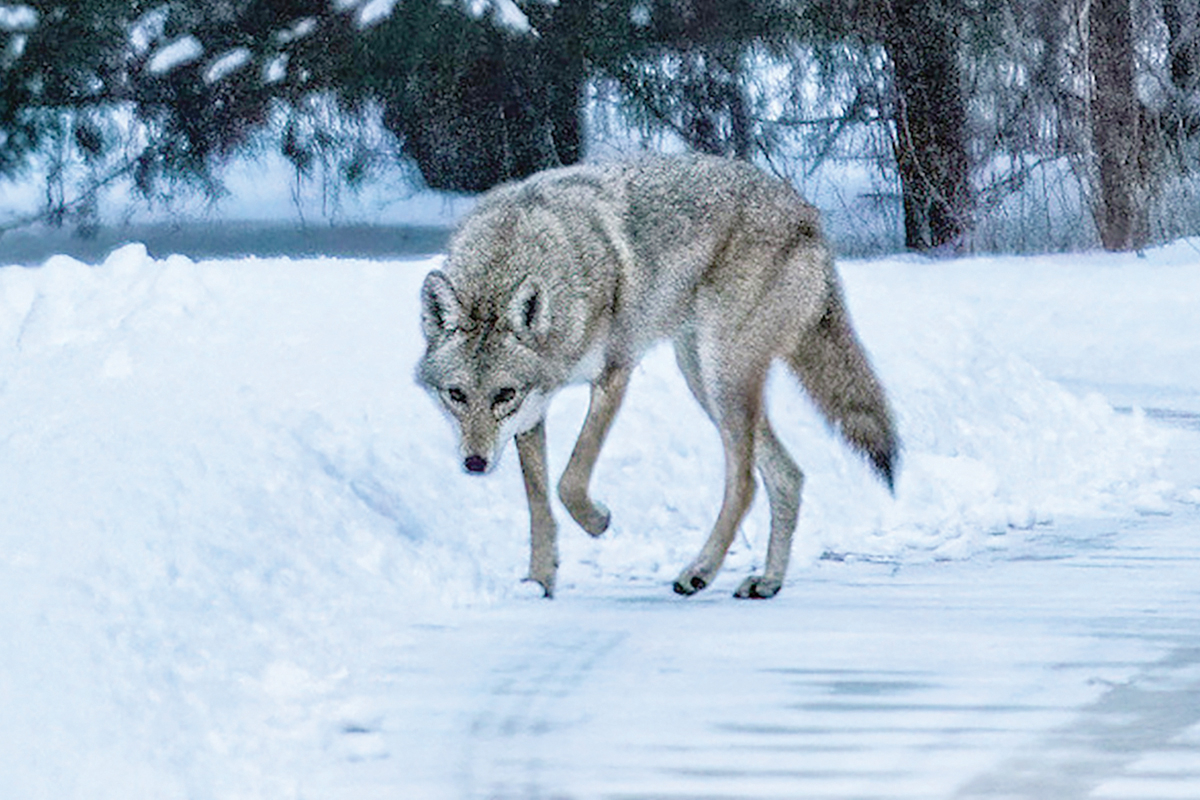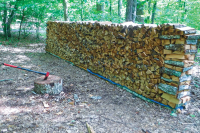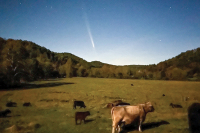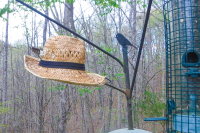Up Moses Creek: Coyote Howl
 A coyote suddenly realizes he’s been spotted by a human. Christian Alessandro Perez photo
A coyote suddenly realizes he’s been spotted by a human. Christian Alessandro Perez photo
I was hiking in the woods above our house at sunrise when coyotes began to howl behind me, and they howled and howled.
I couldn't see them, but they were close. Then I came on a white-tailed doe moving through the trees. She was heading in the same direction I was, up towards a dense growth of rhododendron on the ridgetop — and away from the howls.
I wondered if she was one of the three does I often see on my morning hikes. They move so nimbly on the steep slopes that I call them the Three Graces. Where were the other two? The doe stopped and stared at me, clearly nervous; but I fancied that she was relieved to see I didn't have four legs, a snout and fangs.
When I reached the ridgetop, even more coyotes began to howl — in front of me this time, a second batch. The first were still going at it too, downslope on my left. I couldn't see the new ones either, but to judge by the sound they were right there, just past the rhododendrons the trail snaked through. I hiked on into the thicket but didn't see anything when I came out the other side.
Suddenly they — or perhaps a third batch of coyotes — began howling to my right, down the side of the ridge on our neighbor’s land. I could distinguish different “voices” at once in this band, yelps and high-pitched tremulous wails and lower-sounding howls. Wildlife biologists say coyotes rarely attack humans, and no doubt the statistics they quote are right. But I wasn’t thinking about statistics that morning. I was standing on the ridge surrounded by devilish shrill squalls.
I wondered if a large pack had divided up to hunt the doe, and if my hike had taken me to the spot where the predators planned to come together with her in the middle. I remembered a couple of years earlier when coyotes ravaged a fawn in our yard. And once Becky, in the garden, had a coyote go right past her in hot pursuit of a rabbit. Now, hearing coyotes howling around me, I couldn’t help but wonder what might happen if they were to switch to new "game.”
Related Items
Earlier Becky had told me about a news report she’d heard about coyotes biting 19 people in Montreal in a year. Then an article came to mind I’d read a few years back. It was about two coyotes that had mauled a young woman to death in New England as she hiked in the snow.
I walked on, stout hiking stick in hand. Our son, Henry, had made it for me when he was in Alaska out of tough “Alaskan birch.” I was glad to have the stick. I was glad to be male, old and stringy. I was glad I didn't have fawn spots or rabbit ears.
All of a sudden, the howling stopped. But this doesn't mean it grew quiet. Every dog down in the valley was now going at it — some barking at the coyotes, some howling with them — along with two roosters crowing and a raucous pileated woodpecker that was not to be outdone. It struck me that the woodpecker’s yucka-yucka-yucka cry was the only truly native sound I’d heard that morning, since according to biologists, coyotes themselves are recent invaders of our mountains from Canada and the West.
I was heading back down the trail when I came on the solitary doe again — or a doe, at any rate. She was just a few feet away when I stopped. The doe had already seen me, of course. We stood and looked at each other. Then she slowly raised and lowered her white tail repeatedly. It reminded me of the way a phoebe raises its tail when perched. I pulled out my white handkerchief, slowly raised and lowered it. That really got the doe focused on me — big ears, black eyes, glistening nose and all. She trotted a short ways off then looked back at me, tail now down.
Becky was at the door when I reached the house. She’d heard the coyotes and knew I was on my morning walk. Henry was there too. He said that if I’d started yelling, he was going to head up through the woods to chase the varmints off.
(Burt and Becky Kornegay live in Jackson County. To see more photographs by Christian Alessandro Perez, visit alephrocco.com.)













